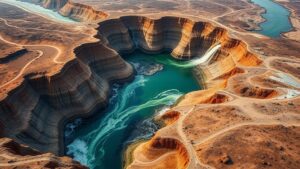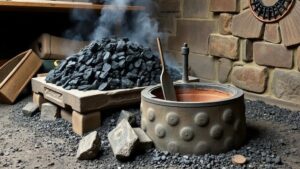How to Find Gold in Glacial Till and Moraines
How to Find Gold in Glacial Till and Moraines
The discovery of gold in glacial till and moraines is not only a thrilling endeavor for individual prospectors but also holds significant implications for geology and mining industries. Glacial till refers to the unsorted sediment deposited by glaciers, while moraines are accumulations of debris, typically at the glacier’s edge. This article provides a comprehensive overview of techniques, tools, and practical considerations for locating gold in these geological formations.
Understanding Glacial Till and Moraines
Before diving into the methods for finding gold, it’s essential to understand the origin and characteristics of glacial till and moraines. Glacial till is composed of a wide range of particle sizes, from clay to boulders, and is often rich in minerals due to the erosion and transportation of rocks by glacial movements. Moraines, on the other hand, are formed from the debris pushed along or deposited by a glacier and are typically found at the glaciers leading edge or its sides.
Gold Deposits in Glacial Geology
Gold is often found in glacial deposits because glaciers erode and transport gold-bearing rocks over long distances. When a glacier retreats, it can deposit these materials in moraines or till. concentration of gold within these deposits can be affected by various factors, including:
- The distance the sediment has traveled
- The parent rocks mineral composition
- Hydraulic sorting as water moves through the sediments
In glacial regions, gold can commonly be found near the terminal and recessional moraines where the glacier has melted away.
Methods for Locating Gold
Locating gold in glacial till requires a combination of geological knowledge and practical fieldwork. Here are several effective methods used by prospectors:
- Panning: This classic method involves using a shallow pan to wash away soil and sediment, allowing the heavier gold particles to settle at the bottom. It is particularly effective in areas where glacial till is exposed.
- Sluicing: This method employs a sluice box to process larger quantities of gravel and sediment, taking advantage of water flow to separate gold from lighter materials.
- Metal Detecting: Gold detectors can be used to locate larger nuggets or concentrations of gold within moraines and till.
- Geological Mapping: Understanding the geological history of an area can help identify the potential for gold deposits. By analyzing maps of glacial activity, prospectors can target specific locations.
Tools and Equipment
Equipping yourself with the right tools is paramount for successful gold prospecting in glacial deposits. Recommended tools include:
- Gold pans and classifiers
- Sluice boxes and handheld gold concentrators
- Metal detectors
- Maps and GPS devices to track locations
- Rock hammers and hand trowels for sampling
Field Techniques
When prospecting, certain field techniques can enhance success rates. Consider the following:
- Start at glacially eroded creek beds or areas where you observe exposed till layers.
- Search the edges of moraines, where erosion has exposed additional sediment.
- Look for signs of mineralization, including quartz veins or heavy black sands, which may indicate nearby gold.
Case Studies: Successful Gold Finding Ventures
For practical insights, examining case studies where prospectors have successfully located gold in glacial moraines can serve as inspiration. For example, in the Yukon Territory of Canada, prospectors have reported significant gold finds in areas where ancient glaciers have deposited rich mineral content. The Bonanza Creek area is known for its historical gold rush, where glacial till played a crucial role in the gold mining activity.
Environmental Considerations
It’s essential to follow best practices in environmental stewardship while prospecting. Disturbing and extracting materials from glacial landscapes can have lasting impacts. Adhere to local mining regulations, and avoid disrupting fragile ecosystems and waterways. Always restore the site after digging and ensure that prospecting does not lead to erosion or habitat destruction.
Conclusion: Your Gold Prospecting Journey
Finding gold in glacial till and moraines is a challenging yet rewarding endeavor that combines scientific knowledge with considerable skill. The key takeaways for successful prospecting are:
- Understand the geology of glacial deposits.
- Use appropriate tools and methods for searching.
- Use sustainable practices to protect the environment.
By following these guidelines and employing effective techniques, aspiring prospectors can increase their chances of uncovering gold treasures hidden within glacially influenced landscapes. Happy prospecting!


